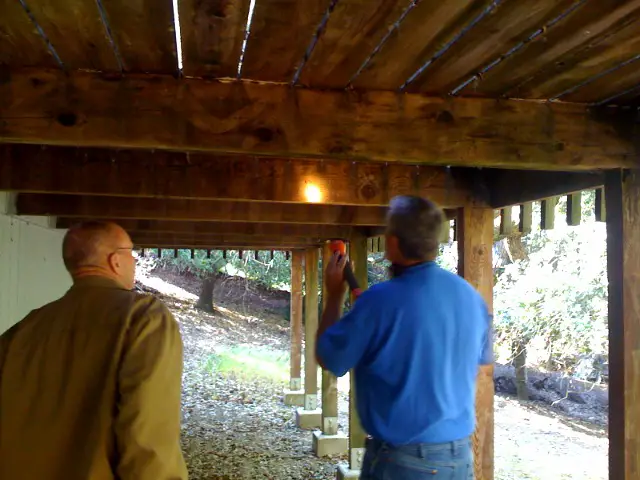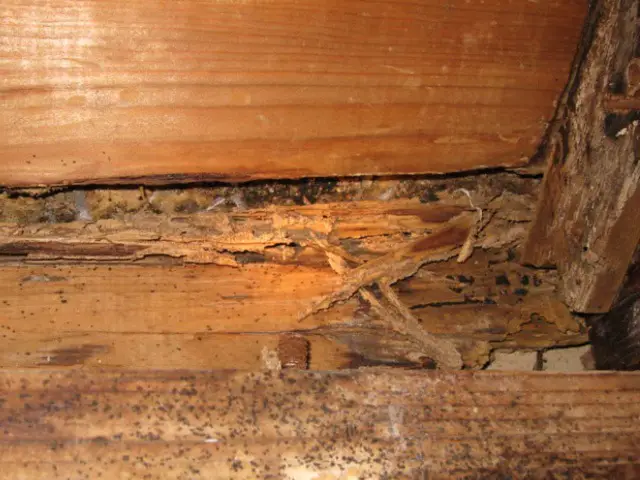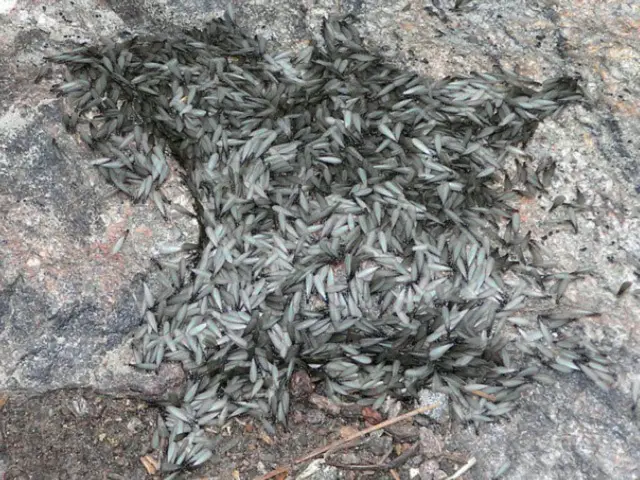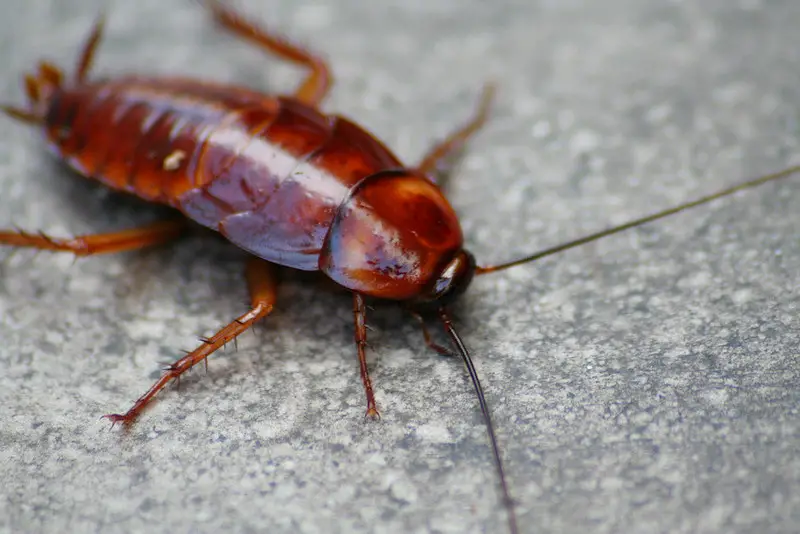Outdoor mouse traps provide quick results. Trapping outdoors is an effective way to control mice before they enter your home. Outdoor trapping combined with mouse repellent keeps mice outside and it’s especially effective with small infestations.
Where to place mousetraps outdoors?
If you are having mice outdoors, you should place mousetraps in areas where they are most active. Place mousetraps near fence lines, along patio walls, bushes, and if there is a pool, near the filter pump.
Anywhere you see mouse droppings outdoors is an excellent place to set mousetraps. However, one mousetrap isn’t enough. Even if you think there is only one mouse outdoors, you’ll need multiple traps. The more traps you set, the faster you catch a mouse. And if you have multiple mice, you’ll catch more of them with several mousetraps; it’s that simple.
Suggested article: “How long can a mouse live without food?”
So don’t think you’ll place a single mousetrap outside your house, and your mice problems have been solved. You need multiple traps outdoors to eliminate them from your yard. For starters, set six mousetraps or so. You can use ordinary live or no-kill mousetraps or snap traps. Make sure the traps are set for the night because mice only come out at night, being nocturnal animals and all. The best way to catch a mouse outdoors is to bait and set at least six mousetraps.
What is the best mousetrap for outdoors?
A high-quality outdoor mousetrap is very effective at trapping mice. If you are an animal lover and don’t want to kill mice, you can use a humane mousetrap outdoors.
A live trap is the best mousetrap for outdoors, and it also a humane way of trapping mice. It’s a win-win; you get rid of the mice without killing them. In addition, some outdoor traps are large enough to trap more than one mouse.
Outdoor live traps are easy to use. Step one is to place some bait inside the cage. Next, you should set the trap outside in an area with mouse activity. Once the mouse has entered the cage, the door slams shut, sealing the rodent safely inside.
It’s important to check your outdoor traps in the morning. Since mice are nocturnal, you will more likely catch them during the night. You can then release the mouse in a non-residential area far from your home. One disadvantage of using a live trap is that you need to check it regularly. If you don’t check the trap at least once a day, you could find rotting rodents lying around your outdoor traps, creating a nasty smell.
What’s the best bait for outdoor mousetraps?
Many mousetrap baits work well. For example, some people swear by peanut butter. Others tell you that there’s no better trap bait than dog food. What’s more, urban legend tells you that mice cannot resist cheese. Actually, cheese is not even the top three most effective mousetrap baits.
The key to trap bait is to experiment. Not all mice will respond to all baits the same way. Some may get trapped with peanut butter the first time you try. The next day, you may not catch a mouse with peanut butter. The important lesson here is to try different baits until you find one that works.
Try peanut butter one night, but if you don’t catch a mouse, try dog food, smoked bacon, or some type of grain. Whatever food you use as trap bait, keep it away from your family. If you use peanut butter, keep it out of your kitchen and mark it so no one will accidentally eat from it. Think about it: You’re baiting mousetraps with it. Keep it out of the kitchen to avoid someone spreading it on their toast with contaminated peanut butter. Use recycled plastic or paper knives and throw them away when you’re through rebaiting and resetting mousetraps.
Can you use electronic mousetraps outside?
Generally, you cannot use electronic mousetraps outside. Most electronic mousetraps are for indoor use only. However, there are some electronic mousetraps you can use outside. If you want to use an electronic mousetrap outdoors, make sure it’s designed to be weather resistant. An electronic mousetrap outside use should be made of durable plastic. It would have tight seals to keep water from entering the mousetrap. Such a design would make it ideal for getting rid of mice outside before they have a chance to get inside your home.
Is it OK to put a mouse trap outside?
Outdoor mouse traps are easy to use and effective, but they are bigger and less discreet than many other types of traps and always involve handling a live mouse. Some outdoor mousetraps work by trapping mice in a small, transparent plastic enclosure to easily check if you have a mouse in the trap.
Typical active areas are walls, appliances, objects and darkened corners. Place mouse traps to a distance to ensure thorough coverage, but this is not guaranteed to be within reach of the mouse. To get the best results place bait traps outside in places where mice are active and place the bait trap on the floor so that the end of the bait is flush with the wall, so mice have easy access to the bait. Place the bait outside of walls near your property or in areas where you can see signs of mice.
For optimum results, set up mouse bait traps where pest feces have appeared in areas where the pests have been seen or where their signs of abrasion or damage to stored food have occurred. Mousetraps should be placed parallel to the wall and provided with a pair of triggers to intercept mice coming from more heavily trapped populations. The bait and the triggering end of the mousetrap should face the wall so that the mouse is tempted to explore the trap instead of running directly over it.
Snapping traps are helpful to catch mice entering the house, but there are other ways. Use bait buckets to catch mice in your garage or outdoors—set traps in outbuildings or areas that serve as rodent shelters.
Bait traps should only be used in outdoor areas where you often see mice. Mice running into walls are unlikely to travel more than 5-10 feet into open spaces to get the bait. When mice enter the living room or kitchen with a snap trap, mouse bait is the best solution.
As temperatures fall and mice slow down, focus on building a nest for them by luring them with trap material such as cotton balls, dental floss, yarn or thread. To be strategic in setting traps, place them along the perimeter of your property or in a room away from your pets or children and set them up regularly.
When mice start using a mousetrap as bait, this means that the bait has been removed and the trap is in the right place for the pest to return. Start a pest control campaign to rid mice of mice by establishing mouse traps in signs of their activity, using as many mouse traps and a few different types of mouse traps as possible to ensure that the opening night is a rousing success. Use snap traps that are tied together by wrapping the fibers of the trap around a trigger, forcing the mouse to pull or gnaw the bait to jump the trap.
Instead of waiting for your cat to strike an unsuspecting mouse, glue mousetraps are a discreet, pesticide-free and non-toxic way to control mouse activity on your property. They don’t want to use poison or messy bait traps to kill mice, so some manufacturers use innovative detection technology to activate the trap when a mouse is detected. The trap emits a high-voltage current that kills the rodent instantly, making it swift and painless to die.
Each type of trap has different sizes, costs and key features. Snapping traps are the most common type of mouse trap that use a quick-release system to catch mice. The snap mousetrap expands the shutter release as much as possible on professional models by using the trap as bait and placing it against a wall so that mice can walk directly into the trap.
Multiple mousetraps do not have to be baited together, but using vanilla extract or peanut butter as an ingredient is one way to increase the attractiveness of the catch.
This means that if you have ten mice swirling around your attic, you will need to use 20 to 30 snap straps to be effective. If you have five mice in your house, this means you have to set 15 traps to end your infestation. Some multi-rat traps have been invented over 100 years ago. These types of traps can catch up to 15 mice in one setting, which means you only need to set them up once to catch multiple mice.
There are several types of mousetraps on the market, so you should do thorough research on the best mousetrap for removal, capture and release. There are a variety of traps that are effective for field mice, and in some cases, it may be necessary to try a few options and use a combination of traps to achieve ideal results. Although most mousetraps are developed nowadays, they are still effective traps for killing mice, and there are a few simple tips for making them work.
If you are dealing with rats or mice at home, the problem can come down to the way you use mousetraps. As a homeowner, you may be used to buying lots of traps and keeping a close watch on them when you hope to solve your rodent problem. Many do not want a trap to fall on their fingers, so it is crucial to choose easy to set one.




